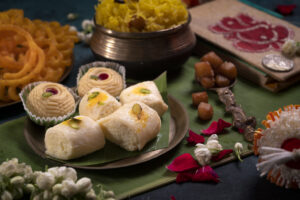Authentic Assamese Khar Recipe: A Taste of Northeast India
Cuisine: Assamese
Khar is a traditional Assamese dish made with raw papaya and alkaline water filtered through the ashes of the digestion plant, giving it a unique flavor. This dish is usually enjoyed during festivals and family gatherings, celebrated for its health benefits and distinct taste. In Assamese cuisine, Khar holds a special place. It is both a comfort food and a dish that showcases the simplicity yet richness of indigenous ingredients. Notably, variations exist such as Khar with different vegetables or meats depending on personal preferences, but today, we will focus on the classic vegetable Khar, which is a favorite among many.
Table of Contents
ToggleExploring the world of Khar broadens your culinary horizons, showcasing not only the unique flavor profiles that can be achieved but also the nutritional advantages tied to the ingredients in the dish. The main element, alkaline water, is derived from the ashes of the digestion plant, a natural source of nutrients. Each spoonful embodies the essence of Assamese culture and traditions, making it a dish worth savoring and exploring further.
Ingredients for Assamese Khar
| Raw Papaya | 300 grams |
| Potato | 1 medium |
| Alkaline water (from digestion plant) | 2 cups |
| Green Chilies | 2-3 |
| Mustard Oil | 2 tablespoons |
| Salt | to taste |
| Turmeric Powder | 1 teaspoon |
| Queen Lemon (optional) | 1 |
Preparation Method for Assamese Khar
To create the perfect Khar, follow these detailed steps to ensure a delightful dish that encapsulates Assamese tradition.
- Peel and chop the raw papaya and potato into small cubes.
- In a pot, add the alkaline water and bring it to a boil.
- Add the chopped papaya and potato, then season with salt and turmeric powder.
- Cook for about 15-20 minutes until the vegetables are tender.
- Add the green chilies and drizzle with mustard oil, then let it simmer for another 5 minutes.
- If using, squeeze in the juice of the queen lemon for a refreshing twist.
- Serve hot with steamed rice.
Nutritional Information
| Calories | Approximately 150 per serving |
| Protein | 3g |
| Fat | 7g |
| Carbohydrates | 20g |
| Fiber | 4g |
When and How to Serve Khar
Khar is an excellent choice for a nutritious meal, suitable for Kids and ideal for Office Tiffin. The light nature of the dish makes it perfect for a midday meal, providing sustenance without the heaviness, which is great for children or anyone seeking a healthy lunch option. Enjoy it alongside steamed rice, creating a wholesome dish that’s balanced and fulfilling.
Cultural Background of Khar
The roots of Khar run deep in Assamese culture and are often linked to local festivals and ceremonies, where the dish symbolizes hospitality and togetherness. Family gatherings during these occasions often showcase Khar, allowing everyone to create lasting memories over shared meals. Interestingly, Khar is not just a popular dish but also carries deep significance in Assamese folklore, embodying the essence of community and warmth.
If one were to explore creating a business around Khar, several factors would come into play. The growing interest in authentic regional cuisines presents a unique opportunity to market Khar beyond Assam, attracting food enthusiasts interested in diverse culinary experiences. However, there are challenges such as sourcing authentic ingredients and competing against established brands already serving regional dishes. Nevertheless, the market’s appetite for unique, health-conscious meals is promising, especially for a dish that represents deep roots in culture and history.
In conclusion, Khar is more than just a meal; it is a dish rich in heritage that can be a part of modern dining experiences. With its nutritional benefits and cultural significance, there’s immense potential for bringing Khar to broader audiences through innovative business ideas while remaining true to traditional values.




